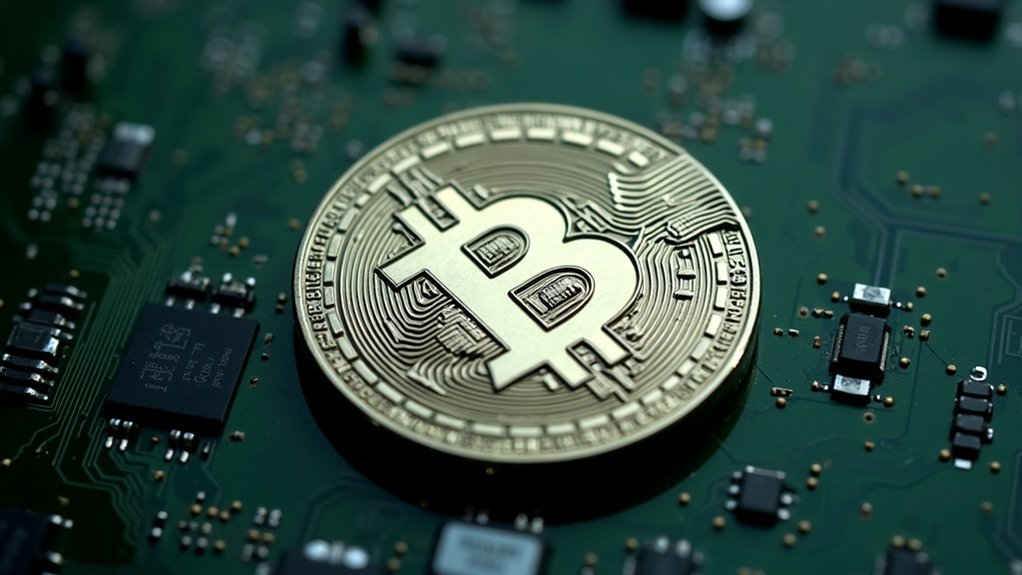ADA is Cardano’s native cryptocurrency, launched by Ethereum co-founder Charles Hoskinson in 2015. It’s not just digital money. ADA serves multiple functions: transaction fees, network staking, governance voting, and creating tokens. Built on a two-layer architecture with the energy-efficient Ouroboros protocol, Cardano takes its time with development. Each upgrade undergoes peer review before implementation. With 31 billion tokens circulating out of a 45 billion cap, there’s more to this methodical project than meets the eye.
While Bitcoin and Ethereum dominate crypto headlines, ADA has quietly established itself as a formidable player in the blockchain arena. Launched in 2015 by Ethereum co-founder Charles Hoskinson, ADA is the native cryptocurrency of the Cardano blockchain. It’s not just another crypto clone. Nope. Cardano takes a distinctly academic approach, using peer-reviewed research to build its ecosystem. Fancy, right?
ADA isn’t just a pretty digital face. It serves multiple functions within the Cardano ecosystem. Users pay transaction fees with it. Validators stake it to secure the network and earn rewards. Holders vote with it on governance proposals. It’s basically the Swiss Army knife of the Cardano blockchain. And yes, it also supports the creation of native tokens and NFTs – because what self-respecting cryptocurrency doesn’t these days?
ADA: the multitasking cryptocurrency that handles fees, staking, voting, and token creation with Swiss-precision functionality
The blockchain itself is architecturally interesting. Two layers instead of one. The settlement layer handles ADA transactions while the computation layer manages smart contracts. This separation isn’t just for show – it helps with scalability. Cardano runs on Ouroboros, a proof-of-stake consensus mechanism that’s both secure and energy-efficient. Take that, Bitcoin miners! Like other blockchains, Cardano relies on full nodes to maintain a complete copy of the transaction history and validate new blocks.
Cardano’s development follows a carefully planned roadmap with phases named after historical figures. Byron, Shelley, Goguen, Basho, and Voltaire. They’ve already implemented decentralization and smart contracts. ADA was named after Ada Lovelace, a pioneering mathematician considered the first computer programmer.
Next up: improving scalability and achieving full governance decentralization. Progress has been methodical. Some might say slow. The team calls it thorough.
As of August 2025, ADA boasts a market cap of approximately $34 billion, with each token priced around $0.95. Major upgrades like the Alonzo hard fork have historically triggered significant price movements.
ADA has a fixed supply cap – no infinite money printing here. The maximum supply is capped at 45 billion tokens, with approximately 31 billion currently in circulation. It’s available on major exchanges like Coinbase and Kraken, making it accessible to investors who want a piece of the action. Not investment advice, obviously.
Frequently Asked Questions
How Does Ada’s Consensus Mechanism Differ From Bitcoin and Ethereum?
ADA uses Ouroboros, a proof-of-stake protocol that’s way less energy-hungry than Bitcoin’s power-guzzling proof-of-work system.
Unlike Bitcoin’s computational race, Cardano selects block producers based on stake size. No expensive mining rigs needed.
While Ethereum has shifted to proof-of-stake too, Cardano’s approach differs with its unique stake pool model and delegation system.
ADA holders can delegate without locking funds. Pretty smart.
The system discourages centralization through saturation parameters.
What Role Do Stake Pool Operators Play in Cardano’s Ecosystem?
Stake pool operators (SPOs) are Cardano’s backbone. They manage the technical infrastructure that validates transactions and creates blocks.
Not just tech support—these folks hold critical cryptographic keys and maintain the network’s security. They enable regular ADA holders to participate in consensus without running nodes themselves.
SPOs earn rewards for successful block production, sharing them with delegators. Pretty sweet deal. Their reliability directly impacts Cardano’s decentralization and overall network health.
How Is Ada’s Tokenomics Structured for Long-Term Sustainability?
ADA’s tokenomics prioritizes long-term viability through several clever mechanisms. The 45 billion supply cap prevents inflation chaos.
Smart distribution: 57.6% to ICO investors, 30.9% for staking rewards, and a treasury that collects transaction fees for ongoing development.
Controlled emission rates keep inflation predictable. Seriously, they thought of everything.
The staking rewards (distributed every 5 days) maintain network security while the saturation parameter prevents centralization.
Pretty sustainable setup, actually.
Can ADA Be Staked Without Losing Access to Funds?
Yes, ADA can be staked without losing access to funds. Unlike other cryptocurrencies, Cardano’s staking is non-custodial. Funds remain in the owner’s wallet. Period.
Users simply delegate their staking rights to a pool operator. The ADA itself? Never leaves their control. They can spend, transfer, or sell at any time.
No lockups. No waiting periods.
The system earns rewards (around 5% APY) while maintaining full liquidity.
Pretty clever design, actually.
What Differentiates Cardano’s Smart Contracts From Ethereum’s?
Cardano’s smart contracts differ from Ethereum’s in several key ways. Built on Haskell-based Plutus, they emphasize formal verification – basically math proofs that code works correctly.
Their dual-layer architecture separates transactions from computation, unlike Ethereum’s single layer. Cardano prioritizes security over speed, using peer-reviewed research and academic rigor.
Yeah, development’s slower, but there’s less chance of costly bugs. They also offer better throughput – 250 TPS versus Ethereum’s measly 15.
Different priorities, different results.









